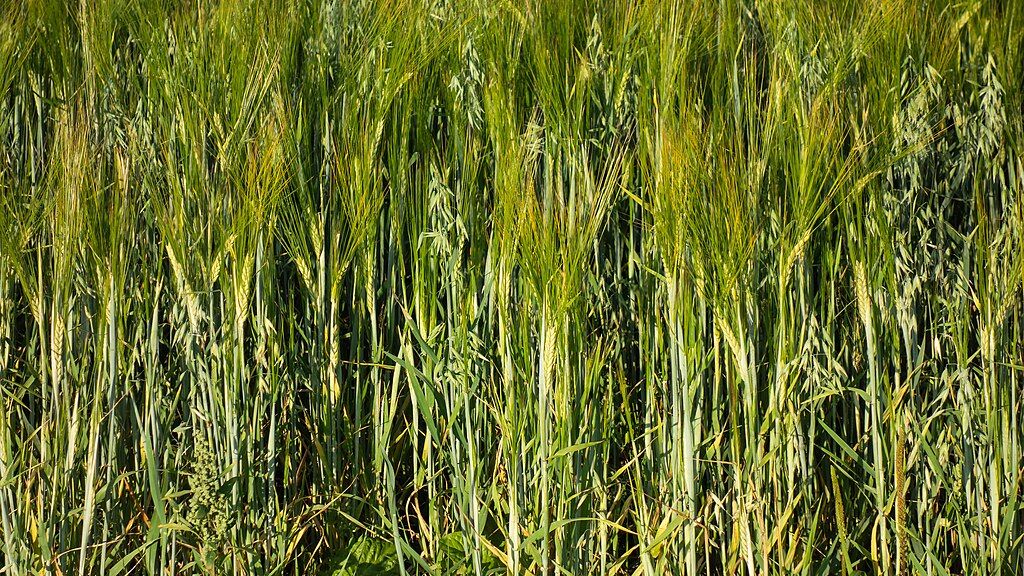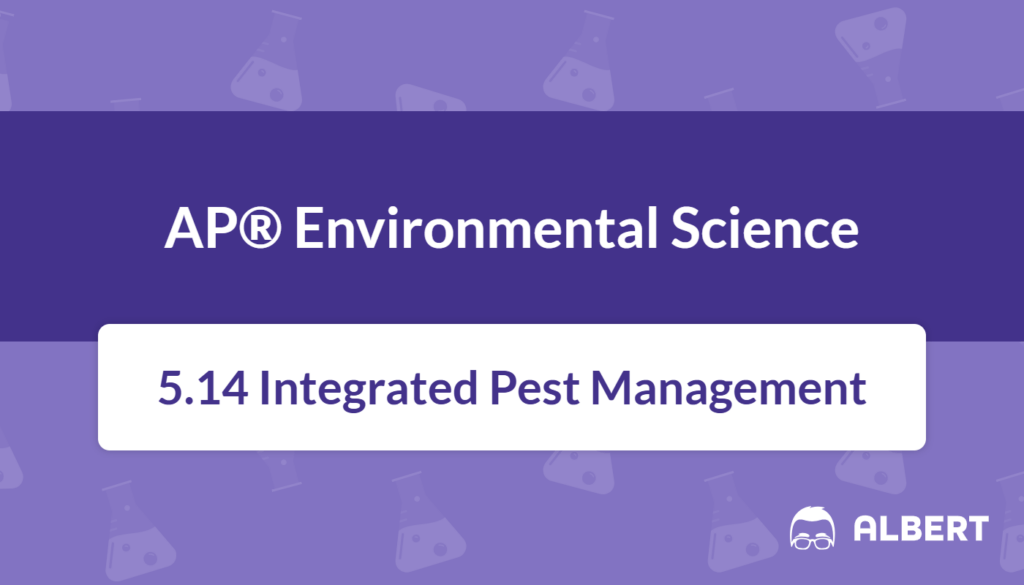What We Review
Introduction
Integrated Pest Management (IPM) has become an essential concept in AP® Environmental Science, particularly when examining the balance between successful agriculture and environmental stewardship. Humans depend on crops for food, yet pests threaten yields and can cause economic losses. Chemical pesticides remain an option for immediate pest control, but these substances may harm soil health, water quality, and non‑target organisms. Consequently, there is a pressing need for approaches that protect both crops and surrounding ecosystems. IPM meets this need by employing a set of strategies designed to minimize environmental disruption while managing pest populations effectively.
Therefore, this review provides a clear overview of IPM, its importance in sustainable agriculture, and practical examples that align with AP® Environmental Science concepts. It also explores the primary methods within IPM and the benefits and drawbacks of using these methods.
What Is Integrated Pest Management (IPM)?
Integrated Pest Management (IPM) is a systematic approach that combines multiple strategies to control or reduce pest populations. It aims to maintain crop health, minimize chemical pesticide use, and reduce negative impacts on the environment. IPM rests on the idea that no single method can effectively handle all pests. Instead, an assortment of biological, physical, cultural, and limited chemical techniques is used to keep populations in check.
The core principles of IPM focus on monitoring pest levels and selecting control methods that cause the least harm to beneficial organisms, soil, and water. By choosing safer methods and using chemical pesticides as a last resort, IPM offers a more sustainable and eco‑friendly alternative to conventional pest control.
For instance, consider a small garden with a recurring aphid problem. An IPM plan might include monitoring aphid population levels, encouraging natural predators, and planting specific flowers that repel aphids. Chemical sprays would only be applied if populations exceed an action threshold, in order to minimize potential harm to bees or other pollinators.
Step‑by‑Step Example: How IPM Works in a Garden
- Observe and identify pests: Carefully check plants for aphids or other pests.
- Determine action thresholds: Decide how many aphids are acceptable before intervention is warranted.
- Select appropriate control methods: Release beneficial insects (such as ladybugs) to feed on aphids.
- Keep track of pest levels: Continue observing plant health to see if aphid numbers are falling.
- Use chemical methods sparingly: If aphid populations remain high and threaten the garden, apply a targeted pesticide, but only as a final step.
Key Methods Used in IPM
Integrated Pest Management relies on several proven strategies to manage pest populations. Although each method can work on its own, employing multiple approaches often delivers optimal results. These techniques include biological control, intercropping, crop rotation, and physical control methods.
1. Biological Control (Biocontrol)
Biological control, often called biocontrol, involves introducing or supporting beneficial organisms that prey on pests. This strategy helps reduce pest populations without heavily depending on synthetic chemicals. Natural predators such as ladybugs, lacewings, and certain parasitic wasps target pest species. As a result, they help preserve the ecological balance in agricultural fields.
Moreover, biocontrol can extend beyond insects. For example, birds of prey can reduce rodent populations, and certain fungi attack harmful insects. However, it is vital to select a biocontrol agent that will not become an invasive species or harm native organisms.
Step‑by‑Step Example: Using Ladybugs to Control Aphids
- Assess the pest situation: Identify areas with heavy aphid infestations.
- Acquire ladybugs: Obtain ladybugs from a reputable biological supply company or encourage them by planting pollen‑rich flowers.
- Release and monitor: Gently release ladybugs in the evening, near aphid hotspots.
- Track results: Observe any reductions in aphid populations over several days.
- Maintain habitat: Plant flowering species that attract and keep ladybugs in the area.
2. Intercropping
Intercropping entails growing two or more crops in close proximity. This technique can disrupt pest life cycles and reduce pest damage. Certain plant combinations repel harmful insects or lure beneficial insects that feed on pests. For instance, marigolds are known to emit substances that deter root‑knot nematodes and other potential threats.
In addition, intercropping promotes biodiversity and can improve soil fertility. The presence of different root structures helps stabilize soil while reducing nutrient depletion. Consequently, fields that are intercropped often display healthier yields.

Example: Growing Marigolds with Vegetables
- Select companion crops: Choose marigolds for their pest‑repelling properties alongside tomatoes or peppers.
- Plant in alternating rows: Position marigolds near vegetable rows to maximize pest deterrence.
- Observe effects: Watch for fewer infestations of harmful insects around marigold borders.
- Replant or rotate: Refresh marigolds or rotate them with other supportive plants each season.
3. Crop Rotation
Crop rotation involves changing the types of crops planted in an area each season. This method targets pests that specialize in feeding on one specific crop type. If the same crop is grown repeatedly, pest populations can easily increase due to a steady food supply. Rotating crops disrupts this cycle and limits pest reproduction.
Implementing crop rotation also helps maintain soil nutrients. Different plants need varying nutrient profiles, so rotating corn with soybeans or other legumes can replenish nitrogen levels in the soil. Thus, crop rotation has dual benefits: pest management and soil health restoration.
Step‑by‑Step Example: Planning a Crop Rotation Schedule
- List crops and their families: Include corn, legumes (beans, peas), and root crops (carrots, potatoes).
- Map the field: Divide the field into distinct sections for each planting season.
- Plan multi‑year rotations: Grow corn in one section in the first year, then replace it with legumes in the next.
- Keep records: Note changes in pest populations and soil conditions after each rotation.
- Evaluate and adjust: Modify the plan if certain pest issues persist or if soil nutrient levels drop.
4. Physical Control Methods
Physical control methods directly remove or block pests from crops. Common techniques include traps, barriers, and manual removal. Traps may rely on bait or sticky surfaces to capture insects, while barriers such as fences or netting protect plants from rodents and birds.
Additionally, physical methods can be cost‑effective, especially on small farms or in gardens. However, large‑scale operations might need significant labor to implement barriers across vast fields. Despite this limitation, physical control contributes to IPM by avoiding the use of chemical treatments.
Example: Installing a Barrier to Protect Crops from Rodents
- Identify high‑risk areas: Look for signs of rodents, like nibble marks or droppings.
- Choose a barrier: Use wire mesh fencing with holes too small for rodents to pass through.
- Install carefully: Bury the fencing at least several inches below ground to prevent digging.
- Inspect regularly: Mend any damaged areas and check for new entry points.
- Supplement with traps, if needed: Place traps to catch any rodents that bypass the barrier.
Benefits of Integrated Pest Management
Integrated Pest Management offers several advantages for both producers and the environment. These strengths often make IPM an appealing choice for those dedicated to long‑term sustainability.
- Reduced reliance on chemical pesticides: Using targeted methods like biocontrol and physical barriers decreases the need for synthetic chemicals.
- Preservation of wildlife: Natural predators neutralize pests while posing fewer risks to non‑target organisms, including beneficial pollinators.
- Safer water supplies: Limited pesticide runoff means fewer harmful chemicals end up in groundwater and local waterways.
- Health benefits for humans: Lower pesticide residues on food and in local environments reduce potential health hazards.
- Long‑term sustainability: Strategies such as crop rotation improve soil fertility, helping future agricultural production remain robust.
Drawbacks of Integrated Pest Management
Despite its advantages, IPM has several challenges that can affect its adoption. For example, the approach is more complex than relying on a single, broad‑spectrum pesticide, so it can require improved planning and deeper knowledge of pest life cycles.
- Complexity of implementation: Farmers or garden managers must monitor pests, evaluate data, and choose from multiple options.
- Potential costs: Some IPM strategies, like purchasing natural predators or installing protective barriers, incur expenses that exceed typical pesticide costs.
- Time and skill requirements: IPM demands training and expertise to interpret pest population trends, properly release biological control agents, or adjust crop rotations.
However, over time, well‑managed IPM programs can pay off through reduced chemical costs, healthier ecosystems, and minimized pest outbreaks.
Conclusion
Integrated Pest Management stands as an excellent framework for sustaining agriculture while protecting the environment. Choosing to integrate biological, physical, and cultural methods reduces the destructive consequences of excessive pesticide usage. Observing pest populations, applying step‑by‑step controls, and continually adjusting strategies form the foundation of IPM.
Moreover, this approach aligns closely with AP® Environmental Science concepts that promote the conservation of resources, protection of biodiversity, and advancement of human health. IPM keeps agricultural systems productive while minimizing harm to the broader ecosystem. Consequently, it remains a powerful tool for those committed to truly sustainable farming.
Exploring local programs or extension services can provide valuable insights and resources for anyone looking to adopt IPM strategies. Community‑based workshops, online guides, and collaboration with experienced practitioners often contain tips for tailoring IPM solutions to specific pests or crops. Ultimately, continuing education ensures the ongoing refinement of these methods and fosters a deeper understanding of how to safeguard both food supplies and the environment.
Key Vocabulary
- Integrated Pest Management (IPM): A sustainable approach that combines multiple techniques—biological, physical, and limited chemical methods—to control pests while minimizing environmental disruption.
- Biocontrol: The use of natural predators or parasites to reduce pest populations without relying heavily on pesticides.
- Intercropping: The practice of growing two or more crop species in proximity to deter pests and bolster soil fertility over time.
- Crop Rotation: Changing the types of crops grown in a field from season to season to deter pests specializing in a single crop and to replenish soil nutrients.
- Natural Predators: Organisms (e.g., ladybugs, birds, parasitic wasps) that feed on pests, helping to control pest populations in agricultural settings.
Sharpen Your Skills for AP® Environmental Science
Are you preparing for the AP® Environmental Science test? We’ve got you covered! Try our review articles designed to help you confidently tackle real-world AP® Environmental Science problems. You’ll find everything you need to succeed, from quick tips to detailed strategies. Start exploring now!
Need help preparing for your AP® Environmental Science exam?
Albert has hundreds of AP® Environmental Science practice questions, free response, and full-length practice tests to try out.








